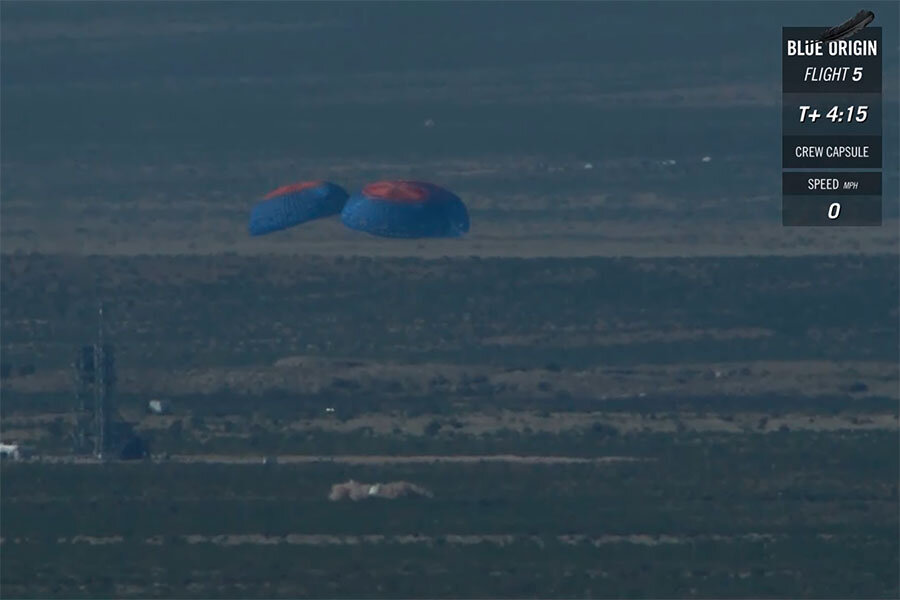Blue Origin's New Shepard's rocket escape system looks like a winner
Loading...
Blue Origin, the private space company owned by Amazon’s Jeff Bezos, successfully conducted a flight safety test of its New Shepard suborbital vehicle Wednesday, successfully bringing an uncrewed capsule to a soft touchdown and vertically landing its booster stage in a West Texas desert.
The launch tested the capsule escape plan designed to return passengers and scientific experiments on board to safety in the event of a failed rocket booster.
"About 45 seconds after liftoff at about 16,000 feet [5,000 meters], we'll intentionally command escape," Bezos wrote in a blog post last month. "Redundant separation systems will sever the crew capsule from the booster at the same time we ignite the escape motor."
Once ejected, the capsule shot away from the failing booster and coasted through the air before three main parachutes and thrusters deployed to bring it safely to landing. Three minutes later, the booster stage returned to Earth, landing vertically.
The system had been tested on the ground, but this was be the first in-air test and the company has programed the capsule to deploy at the most stressful point in the launch, according to Bezos.
Escape systems are not a new concept and have been built into even the earliest rockets, including the Mercury, Apollo, and Soyuz spacecraft. But those escape motors sat on top of the passenger capsule and thus had to be jettisoned during the flight for the capsule to make it to space.
Blue Origin’s escape motor lies below the capsule and will need to be jettisoned only in the event of a rocket failure, rather than with every flight, whether it is successful or not. Making both the rocket and the escape motor reusable will drive down the cost of space travel.
Bezos's competitors are working on similar technology: SpaceX has demonstrated its escape plan on 3D printed models, while Boeing plans to test the escape system on its CST-100 Starliner in 2017.
The rockets' successful landing was unexpected, even to Bezos. The 70,000 lbs. of force required to eject the capsule, even in the event of a simulated rocket malfunction such as this one, is enough to render the rocket unusable.
Therefore the New Shepard, which has been successfully launched, landed, and reused four times since November 2015, likely saw its final launch Wednesday









